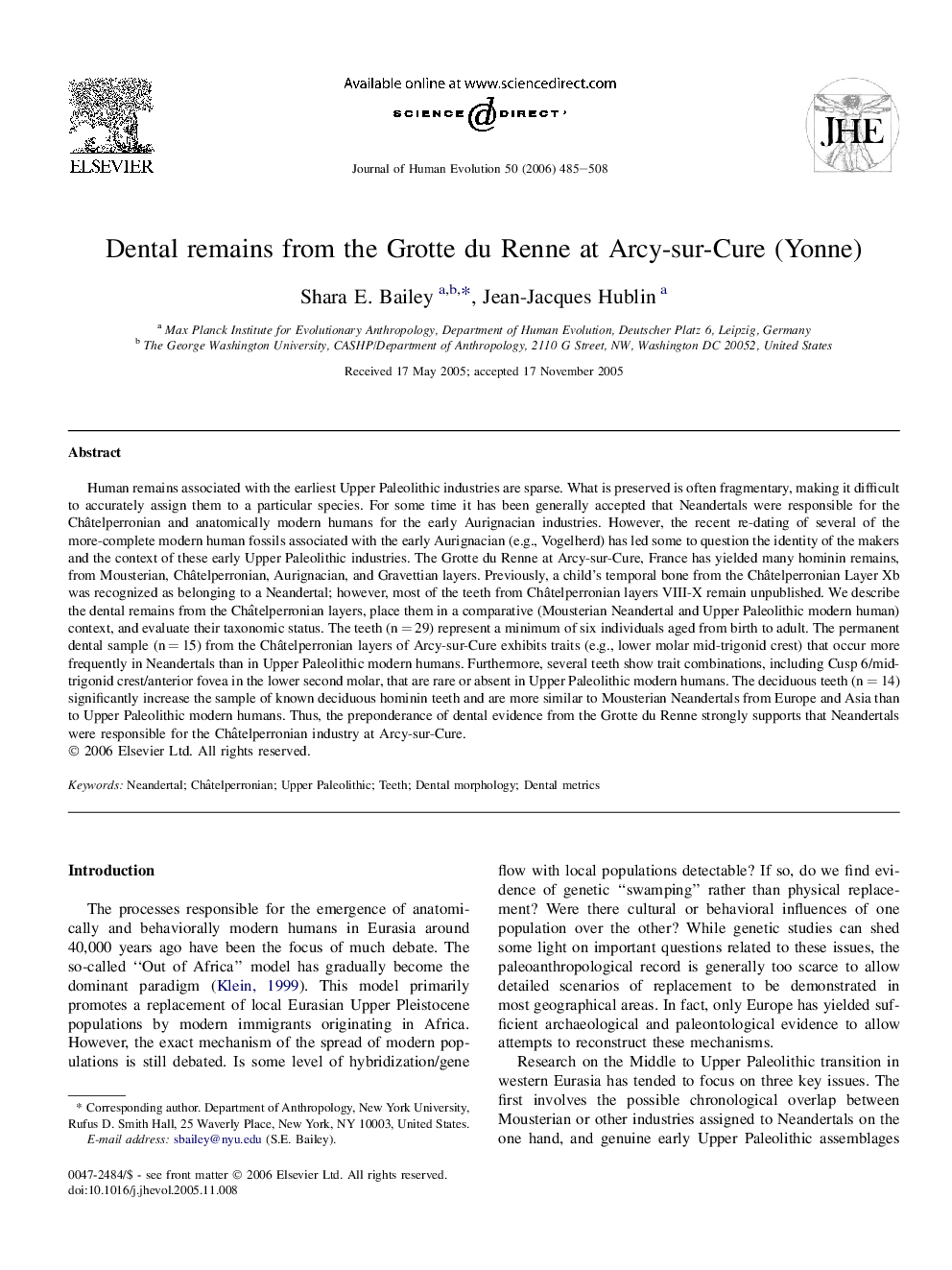| کد مقاله | کد نشریه | سال انتشار | مقاله انگلیسی | نسخه تمام متن |
|---|---|---|---|---|
| 4557154 | 1329530 | 2006 | 24 صفحه PDF | دانلود رایگان |

Human remains associated with the earliest Upper Paleolithic industries are sparse. What is preserved is often fragmentary, making it difficult to accurately assign them to a particular species. For some time it has been generally accepted that Neandertals were responsible for the Châtelperronian and anatomically modern humans for the early Aurignacian industries. However, the recent re-dating of several of the more-complete modern human fossils associated with the early Aurignacian (e.g., Vogelherd) has led some to question the identity of the makers and the context of these early Upper Paleolithic industries. The Grotte du Renne at Arcy-sur-Cure, France has yielded many hominin remains, from Mousterian, Châtelperronian, Aurignacian, and Gravettian layers. Previously, a child's temporal bone from the Châtelperronian Layer Xb was recognized as belonging to a Neandertal; however, most of the teeth from Châtelperronian layers VIII-X remain unpublished. We describe the dental remains from the Châtelperronian layers, place them in a comparative (Mousterian Neandertal and Upper Paleolithic modern human) context, and evaluate their taxonomic status. The teeth (n = 29) represent a minimum of six individuals aged from birth to adult. The permanent dental sample (n = 15) from the Châtelperronian layers of Arcy-sur-Cure exhibits traits (e.g., lower molar mid-trigonid crest) that occur more frequently in Neandertals than in Upper Paleolithic modern humans. Furthermore, several teeth show trait combinations, including Cusp 6/mid-trigonid crest/anterior fovea in the lower second molar, that are rare or absent in Upper Paleolithic modern humans. The deciduous teeth (n = 14) significantly increase the sample of known deciduous hominin teeth and are more similar to Mousterian Neandertals from Europe and Asia than to Upper Paleolithic modern humans. Thus, the preponderance of dental evidence from the Grotte du Renne strongly supports that Neandertals were responsible for the Châtelperronian industry at Arcy-sur-Cure.
Journal: Journal of Human Evolution - Volume 50, Issue 5, May 2006, Pages 485–508